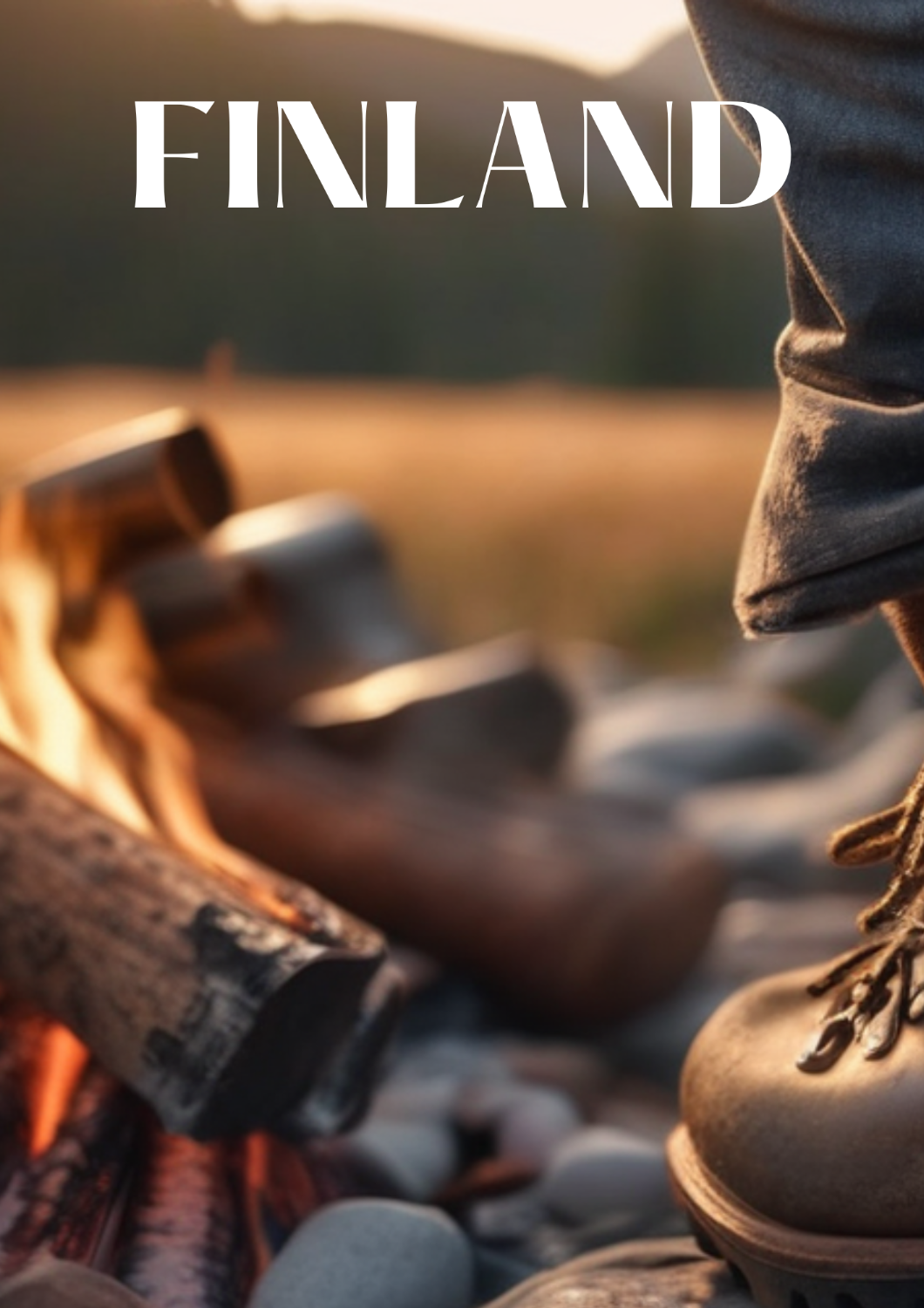
The Four Seasons of Hiking

The Four Seasons of Hiking – The Right Gear Ensures a Safe and Memorable Adventure
Hiking in the unique wilderness of Lapland is an experience that stays with you for a lifetime. However, conditions can change rapidly, and each season brings its own challenges. Whether you’re embarking on a winter expedition in freezing temperatures, witnessing the rebirth of nature in spring, experiencing the endless daylight of summer, or admiring the breathtaking autumn foliage, proper gear is the key to a successful hike.
One of the most crucial safety measures is hiring a local wilderness guide if you're unfamiliar with the area. Weather in the north can shift suddenly, trails can be demanding, and navigating remote wilderness areas requires experience. A professional guide not only enhances safety but also enriches the journey with knowledge of local wildlife, landscapes, and traditions.
🧥 Layering – The Key to Comfort and Safety on a Hike
Dressing appropriately ensures that you stay warm and dry without overheating while moving. The layering system allows you to regulate your body temperature as conditions change.
1️⃣ Base Layer – Wicking Moisture Away
The base layer’s primary function is to keep your skin dry. Merino wool or technical fabrics are the best choices as they are breathable, quick-drying, and resistant to odors, even on long hikes.
✔️ Breathable base layer (merino wool or technical material)
✔️ Sports bras for women, breathable boxers for men
2️⃣ Mid Layer – Retaining Body Heat
The mid layer provides insulation and keeps your body warm. A fleece or wool sweater is a solid choice, and in colder conditions, a lightweight down jacket offers additional warmth.
✔️ Thick fleece or wool sweater
✔️ Lightweight down jacket for extra insulation
3️⃣ Shell Layer – Protection Against Wind and Rain
Weatherproof clothing is essential, whether facing winter’s freezing temperatures, autumn storms, or spring and summer rain showers.
✔️ Waterproof and windproof shell jacket and pants
4️⃣ Insulation Layer – Extra Warmth for Breaks and Camping
During long breaks, your body cools down quickly, so an additional insulation layer, such as a down jacket or thick wool sweater, is essential.
✔️ Warm camp jacket (down or thick fleece)
✔️ Insulated pants for extremely cold conditions
5️⃣ Accessories – Keeping Your Head, Hands, and Feet Warm
Your head, hands, and feet are the most vulnerable to losing heat, making high-quality accessories crucial.
✔️ Warm beanie or balaclava
✔️ Wool socks + extra pair for sleeping
✔️ Two pairs of gloves (thick mittens and thinner liners)
✔️ Gaiters (to prevent snow and water from entering boots)
🥾 Footwear and Mobility Equipment
Proper footwear and support equipment make hiking more comfortable and secure.
✔️ Winter: Insulated hiking boots or warm winter boots
✔️ Summer: Lighter yet sturdy hiking boots
✔️ Snowshoes or backcountry skis for snowy terrain
✔️ Trekking poles for support and stability
⛺ Camping and Sleeping Gear
The right sleeping gear ensures a comfortable rest, whether camping in the warmth of a summer night or the cold of winter.
✔️ Winter tent (good ventilation and snow protection)
✔️ Three-season tent for spring and autumn
✔️ Warm sleeping bag (-20°C or lower for winter conditions)
✔️ Lighter sleeping bag for summer use
✔️ Sleeping bag liner (for extra warmth and hygiene)
✔️ Thick sleeping pad (to insulate from the cold ground)
✔️ Headlamp + extra batteries
🍽️ Food and Hydration
Hiking requires plenty of energy, so food should be both nutritious and easy to prepare.
✔️ Camping stove and fuel
✔️ Cooking pot and utensils
✔️ Thermos bottle for warm drinks
✔️ Enough water or a water purification system
✔️ Dried food, nuts, and energy-rich snacks
✔️ Waterproof matches or fire starter
🆘 First Aid and Safety
Hiking in remote areas requires careful planning and preparation for emergencies.
✔️ First aid kit (including wound care supplies, pain relievers, blister plasters)
✔️ Emergency blanket or survival shelter
✔️ Mobile phone (keep warm) + power bank
✔️ Map, compass, and GPS device
✔️ Emergency signaling devices (whistle, signal light)
✔️ Hire a local wilderness guide if you’re unfamiliar with the area
♻️ Responsible Hiking – Leave No Trace
Sustainable hiking means respecting nature and minimizing your impact.
✔️ Pack out all trash
✔️ Use biodegradable soap
✔️ Leave campsites clean for the next hikers
📌 Summary – Essential Takeaways
🔹 Dress in layers and choose high-quality materials (wool, merino wool, down)
🔹 Select appropriate footwear and mobility aids (backcountry skis or snowshoes)
🔹 Maintain energy and hydration (warm drinks and nutrient-rich food)
🔹 Prioritize safety (first aid kit, emergency blanket, GPS, and power bank)
🔹 Respect nature – leave no waste or traces behind
🔹 Consider hiring a local wilderness guide if you're unfamiliar with the area
The season and conditions determine the required gear, but one thing remains constant: good planning and the right equipment ensure a successful hike. Whether your destination is a snowy wilderness, a blossoming spring landscape, or a summer forest, are you ready for an adventure? 🌲⛰️🔥

